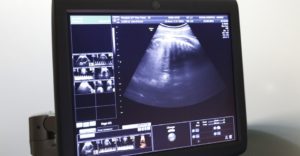Due to the pandemic, radiology departments are compelled to adopt several novel practices, like staff redeployment, remote reporting, and services aimed at Covid-care. But, there is an even bigger issue on the horizon that young radiologists should address – the global climate change.
Bryan W. Buckely with Peter J. MacMohan, from Department of Radiology, Mater Misericordiae University Hospital, in Dublin, said, “The innate ability of radiology and health facility to acclimatize, as it did in the distant past, should be carefully harnessed for an even greater challenge to the health of the world at large – climate change and the crisis that follows. As radiology trainees, it is important to lead the pressing issue.”

Buckley, at the eminent Irish Hospital, is a resident in third-year. MacMohan laid out this problem together with a few possible solutions in a popular Radiology editorial on July 13. Below are the 7 key points:
- The imaging equipment of various radiology departments in hospitals and facilities is energy-intensive. For illustration, a typical MRI scanner requires sufficient power required for cooling one three-bedroom apartment with a central air conditioner for a day, and at least 32 reporting zones use the equal amount of such 12 Swiss homes. Whereas, ultrasound utilizes one-twentieth of MRI and CT energy.
- Imaging studies ought to be justified clinically, noted the authors. However, those decisions should be taken competently, addressing their ecological impact.
- Radiology data experience rapid growth, and information storage can be expensive. Over 28.5 million respective studies are performed across Ireland’s national integrated imaging system, leading to 1 petabyte and still growing. Half of that, or more, is related to CT. As exams get more complicated, sending studies and storing information would require plenty of energy.
- However, it is not just about image storing that is energy efficient. Servers and cooling systems also account for approximately 86% of all energy used. With the attention on artificial intelligence growing rapidly, data sets, computational efforts, as well as the hardware would demand extra energy.
- On the flip side, the tech-heavy foundation of the radiology department “uniquely” places this specialty to hold sustainable practices. This change begins at the local level, argued the pair, while trainees educating others and advocating it.
- The “as low as reasonably achievable” mandates is a principle that services providers expose their patients to minimize radiation. This can also be applied to our world environment at large. A situation utilizing ultrasound to track ovarian cysts rather than MRI optimized economic as well as ecologic impact without affecting patients explained the authors.
- Finally, radiologists must limit excess data creation on a regular basis, which is stored indefinitely. Abbreviated MRI protocols generate interest and are ecologically and economically complete, according to the authors. Storing multiple repetitions and renovations of raw data of CT, meanwhile, is least likely to be needed. Hence, there is no need to save that data forever.
All your health and medical imaging concerns can be sorted with sepStream®. One of the finest health imaging software solutions, we have an efficient team to handle your requirement and deliver faultless results within a short time. We use AI-enabled technology combined with state-of-the-art infrastructure to deliver impeccable results.